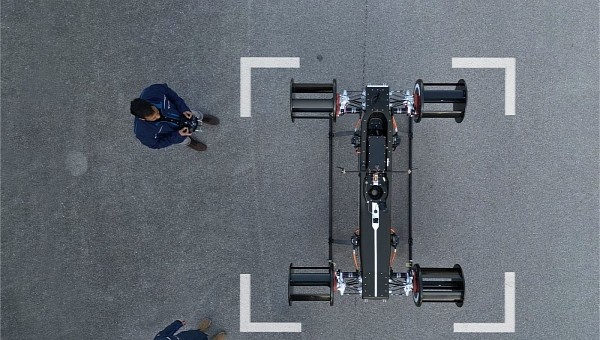It sounds complicated, but the Cyclogyro technology is at the heart of this flying contraption that seems to be in a league of its own. It’s called the CycloRotor and it has just reached a milestone on its way to commercial operations.
No futuristic air taxi has started commercial services yet, but this doesn’t stop manufacturers from designing and testing an impressive variety of concepts. In the design phase, there’s more freedom to come up with bold ideas and push the boundaries of what’s possible for the AAM (Advanced Air Mobility) sector. Things get complicated when it’s time to get all the required approvals.
Luckily for this particular eVTOL (electric vertical take-off and landing), it officially got the green light for its first outdoor flight tests. This is more than a year after it successfully completed the first flight test indoors.
CycloTech, an Austrian manufacturer, got the approval from Austro Control (the national aviation safety authority) based on EASA (European Union Aviation Safety Agency) regulations. This enables the company to fly its 85 kg (187 lbs) demonstrator in a controlled test area of 2,500 square meters (27,000 square feet) in VLOS (Visual Line of Sight), meaning that the operators must be able to see the aircraft at all times, during the test.
The CycloRotor will be tested at a conventional airport in Upper Austria, with the flight campaign kicking off in March. There’s still a very long road ahead, but this will be a great achievement not just for the future aircraft, but for the cyclogyro technology itself.
The main difference between this aircraft and most VTOLs is that it can move forward, backward, up, and down, while the others are limited to just one direction. This is possible thanks to CycloTech’s 360-degree thrust vectoring system, enabling the aircraft to have a wider range of motion. It also boasts other benefits, claiming a smoother transition from hover to forward flight, better control, and improved maneuverability.
This translates to an air vehicle that’s better equipped to withstand unfavorable weather conditions, in addition to all the known benefits of electric aircraft with vertical flight capabilities.
The Austrian manufacturer says that it’s been working on this technology for a decade, and the interesting part is that it was inspired by a similar concept used in the maritime industry (the Voith-Schneider-Propeller).
The future aircraft would be fitted with four CycloRotors, which are the basic propulsion units that enable it to change the direction of thrust. It would also be remarkably lightweight, thanks to composite materials and the latest manufacturing technologies. The goal is to obtain an unmanned VTOL that can bring the benefits of this technology to urban air mobility, regional aviation, and cargo transportation.
Luckily for this particular eVTOL (electric vertical take-off and landing), it officially got the green light for its first outdoor flight tests. This is more than a year after it successfully completed the first flight test indoors.
CycloTech, an Austrian manufacturer, got the approval from Austro Control (the national aviation safety authority) based on EASA (European Union Aviation Safety Agency) regulations. This enables the company to fly its 85 kg (187 lbs) demonstrator in a controlled test area of 2,500 square meters (27,000 square feet) in VLOS (Visual Line of Sight), meaning that the operators must be able to see the aircraft at all times, during the test.
The CycloRotor will be tested at a conventional airport in Upper Austria, with the flight campaign kicking off in March. There’s still a very long road ahead, but this will be a great achievement not just for the future aircraft, but for the cyclogyro technology itself.
The main difference between this aircraft and most VTOLs is that it can move forward, backward, up, and down, while the others are limited to just one direction. This is possible thanks to CycloTech’s 360-degree thrust vectoring system, enabling the aircraft to have a wider range of motion. It also boasts other benefits, claiming a smoother transition from hover to forward flight, better control, and improved maneuverability.
This translates to an air vehicle that’s better equipped to withstand unfavorable weather conditions, in addition to all the known benefits of electric aircraft with vertical flight capabilities.
The Austrian manufacturer says that it’s been working on this technology for a decade, and the interesting part is that it was inspired by a similar concept used in the maritime industry (the Voith-Schneider-Propeller).
The future aircraft would be fitted with four CycloRotors, which are the basic propulsion units that enable it to change the direction of thrust. It would also be remarkably lightweight, thanks to composite materials and the latest manufacturing technologies. The goal is to obtain an unmanned VTOL that can bring the benefits of this technology to urban air mobility, regional aviation, and cargo transportation.








